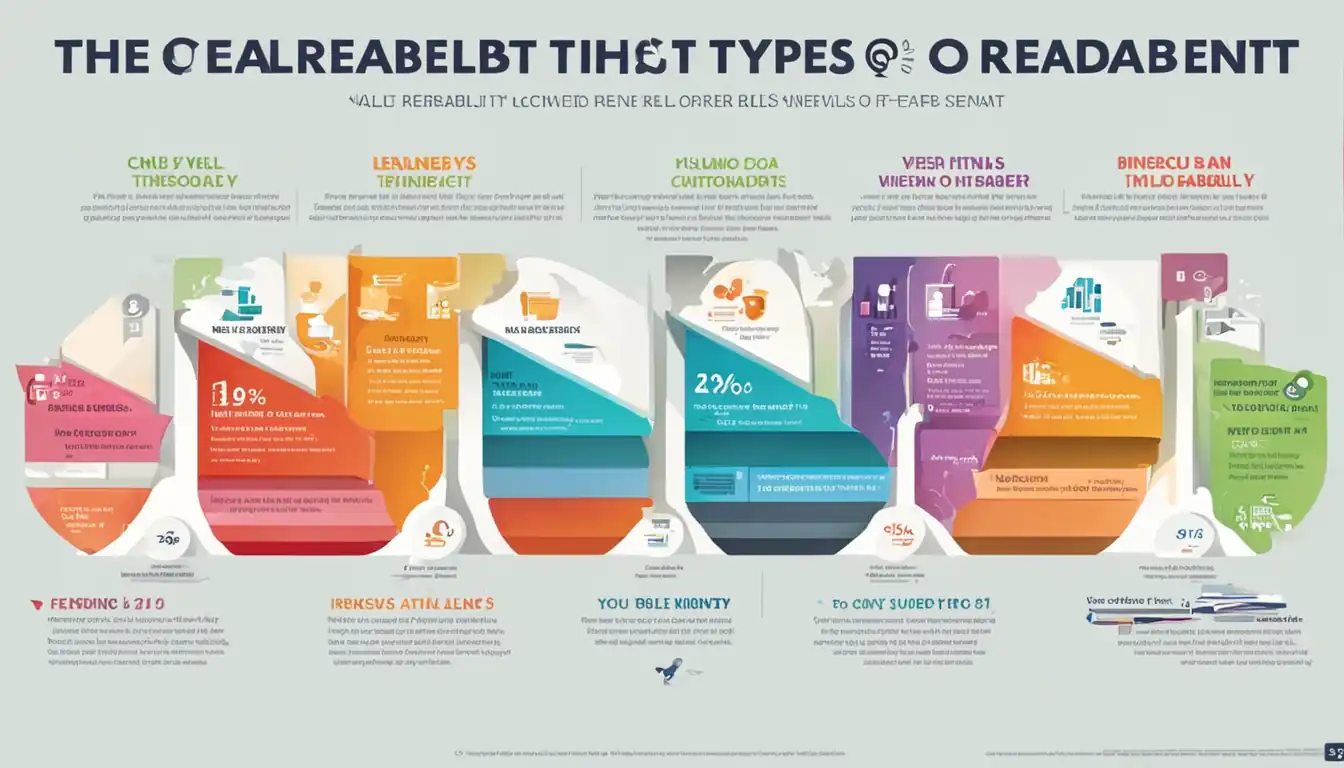Exploring Content Readability Standards

In the vast world of SEO, one often overlooked aspect is content readability. But fear not, dear reader, for we are here to delve into this crucial topic and uncover its secrets. So grab a cup of coffee, sit back, and let's explore the fascinating realm of content readability standards.
What is Content Readability
Content readability refers to how easy it is for readers to understand and engage with the content on a webpage. It involves factors such as sentence structure, vocabulary, and formatting that affect the overall clarity and accessibility of the text.
Understanding the Basics
When it comes to content readability, there are several key factors to consider:
- Sentence Structure: Using clear and concise sentences helps readers follow along easily.
- Vocabulary: Avoiding jargon and using simple language can make the content more accessible to a wider audience.
- Formatting: Breaking up text with headings, bullet points, and images can improve readability by making the content easier to scan.
The Impact on User Engagement
Content readability plays a crucial role in user engagement. When content is easy to read and understand, users are more likely to stay on the page longer, consume more information, and ultimately take action (such as making a purchase or sharing the content).
In fact, studies have shown that improving content readability can lead to higher conversion rates and lower bounce rates. By prioritizing readability standards in your content creation process, you can enhance the overall user experience and drive better results for your website.
Key Factors Influencing Readability

When it comes to creating content that is easily digestible by readers, there are several key factors that influence readability. By understanding and implementing these factors, you can ensure that your content is engaging and accessible to a wide audience.
Text Structure and Organization
The way your content is structured and organized plays a crucial role in its readability. Readers are more likely to engage with content that is well-organized and easy to follow. Here are some tips for improving text structure and organization:
- Use headings and subheadings to break up the text and guide readers through the content.
- Keep paragraphs short and focused on one main idea.
- Use bullet points or numbered lists to highlight key points.
- Include plenty of white space to make the text easier to read.
Choice of Words and Phrasing
The words you choose and how you phrase them can greatly impact the readability of your content. It's important to use clear, concise language that is easy for readers to understand. Here are some tips for improving choice of words and phrasing:
- Avoid jargon or technical language unless it is necessary for your audience.
- Use active voice whenever possible to make the writing more engaging.
- Define any terms or concepts that may be unfamiliar to your readers.
- Break up long sentences into shorter, more manageable chunks.
By paying attention to these key factors influencing readability, you can create content that is not only informative but also easy for readers to consume.
Tools and Tests for Measuring Readability
In the world of content creation, ensuring that your writing is easily digestible and understandable by your target audience is crucial. One way to measure the readability of your content is through various tools and tests designed for this purpose. Let's explore some popular readability formulas and digital tools that can help you assess the quality of your text.
Popular Readability Formulas
Flesch Reading Ease: Developed by Rudolf Flesch, this formula calculates the ease of reading a piece of text based on sentence length and syllable count. The higher the score, the easier the text is to read.
Gunning Fog Index: This formula measures the complexity of a piece of writing by analyzing sentence length and word difficulty. A lower score indicates simpler language.
SMOG Index: Standing for "Simple Measure Of Gobbledygook," this formula estimates the years of education a reader needs to understand a piece of text. It considers polysyllabic words and sentence length.
Coleman-Liau Index: This formula relies on characters instead of syllables to determine readability. It calculates grade level based on average number of characters per word and sentences per 100 words.
Digital Tools to Assess Text Quality
Grammarly: Known for its grammar checking capabilities, Grammarly also provides a readability score for your content based on factors like sentence length, word choice, and clarity.
Yoast SEO Plugin: If you use WordPress, Yoast SEO offers a readability analysis feature that evaluates your content against various criteria such as subheadings, paragraph length, and transition words.
Hemingway Editor: This tool highlights complex sentences, passive voice usage, adverb overuse, and other readability issues in your writing to help you simplify it for better comprehension.
Readable.io: With features like readability scoring, keyword density analysis, and text statistics reporting, Readable.io helps you optimize your content for both search engines and human readers.
By utilizing these tools and formulas to assess the readability of your content, you can ensure that your writing is clear, engaging, and accessible to your audience.
Improving Readability in Various Types of Content

Blogs and Articles
When it comes to enhancing readability in blogs and articles, there are several key strategies that can be implemented.
Key Points:
- Use short paragraphs to break up text and make it easier for readers to digest information.
- Incorporate subheadings to organize content and guide readers through the piece.
- Utilize bullet points or numbered lists to highlight important information.
- Include relevant images or graphics to enhance visual appeal and engage readers.
Technical Writing and Reports
In technical writing and reports, readability is crucial for conveying complex information in a clear and concise manner.
Key Points:
- Define technical terms or jargon to ensure understanding for all readers.
- Use tables or charts to present data in a visually appealing format.
- Break down complex concepts into manageable sections with clear headings.
- Avoid excessive use of passive voice or overly complicated language that may confuse readers.
Remember, regardless of the type of content you are creating, prioritizing readability will ultimately lead to a more engaging and effective piece.
Best Practices for Maintaining High Readability Standards
Consistency Across Your Content
Ensuring consistency across your content is crucial for maintaining high readability standards. This includes using a consistent tone, style, and formatting throughout all your written material. By keeping a uniform voice and structure, you make it easier for readers to follow along and understand the information presented.
Key Points:
- Use the same writing style across all your content pieces.
- Maintain consistent formatting, such as font size, spacing, and headings.
- Stick to a similar tone to create a cohesive reading experience.
Regular Reviews and Updates
Regularly reviewing and updating your content is essential for ensuring it remains readable and relevant. As trends change and new information becomes available, it's important to keep your content up-to-date. This not only helps improve readability but also boosts your credibility as an authoritative source in your industry.
Key Points:
- Schedule regular reviews of your existing content to check for accuracy and relevance.
- Update outdated information or statistics to keep your content current.
- Consider adding new insights or perspectives to enhance the value of your articles.
By following these best practices for maintaining high readability standards, you can create engaging and informative content that resonates with your audience.
What is Content Readability
Ah, the age-old question - what exactly is content readability? Well, my friend, it's all about making your text easy to read and understand. Understanding the Basics is key here - think clear sentences, logical flow, and simple language. And why does it matter? The Impact on User Engagement is huge - readers are more likely to stick around if your content is readable.